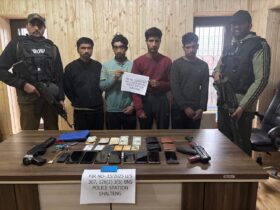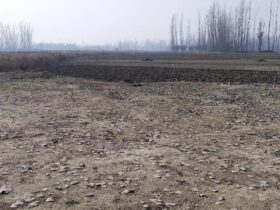As a sequel to the directions of Governor N N Vohra to top officials of GAD, State Vigilance Commission (SVC) and State Vigilance Organization (SVO) to identify the corrupt elements in the State, the latter have done a mapping of the tainted officials, serving at different levels in the administration and the list is likely to be submitted to Raj Bhavan soon.
Reliable sources told, “Immediately after the directions of Governor, the Vigilance Organisation in consultation with GAD had started an exercise to primarily identify the Departments, where the menace of corruption was deep rooted and also prepared a list of officials, who were indulging in illegal practices”.
“The details accumulated by the Vigilance Organization were categorised into three groups —- Government employees, who were habitual offenders; officials who identified as corrupt elements and thirdly officers, who were prone to adopt corrupt practices”, sources said adding “as per the data collected for the last six years (2008-2014), the total number of tainted officials, who stood clearly identified were 1039. While there were 185 employees in the first category and 854 officials were classified in the other two categories”, sources asserted.
Besides, sources said, “the Vigilance Organization had also prepared a corruption index of various Government Departments on the basis of prevalent levels of corruption”.
Mr Vohra had also sought separate list of those officers, who are repeatedly indulging in corrupt practices and were not ready to mend their ways besides the list of deadwoods in the Government departments.
Responding to these directions, sources said, “the Vigilance Organization has prepared a separate list of the habitual offenders and identified 27 officials, against whom more than two FIRs were registered. Besides, there were 148 officials who had been caught red-handed in traps and nine others, again whom inquiry proceedings had been initiated”.
“There were 777 cases under the second category, wherein as per the provisions of Vigilance manual, Departmental Inquiry had been recommended. However, interestingly, in all these cases the Departmental inquiries had been lingering for quite some time and Government sanction for their prosecution was pending in such cases”, sources said.
“In several cases, the Government had offered a new lease of life to corrupt elements by not giving the sanction to prosecute them. There were at least nine high ranking officials, against whom prosecution sanction has been pending”, they added.
In case of senior incumbents like KAS officials, the prosecution sanction ought to be given by GAD Department, which is headed by the Chief Minister, while as in case of lower rank officers, the sanction is accorded by the concerned Minister. “In case of IAS/IPS/IFS cadre officers, the prosecution sanction has to be obtained from the Central Government”, sources remarked.
Sources stated there were only 77 cases during the past six year (2008-14), wherein officials were awarded punishment after the Departmental Inquiries indicted them for the wrongdoing.
In the January 19 meeting, the Governor had also directed the Vigilance Organization to ensure that the public service delivery system is kept under special watch for its responsive and transparent functioning.
As per the instructions from Raj Bhavan, sources said, “process was also initiated to identify the corrupt elements within the administration and there was a list of 104 officials, who had been kept on the watch list. Several of these officials included were holding key positions in the administration and the list included several Heads of Departments and Directors”, sources said.
Elaborating over the Corruption index prepared by the Vigilance Organization, sources said, “we have identified several Departments, where officials are more prone to corrupt practices. While Revenue Department leads the pack, it is closely followed by the Education Department and Forest Department figures at the end of list”,

















Leave a Reply